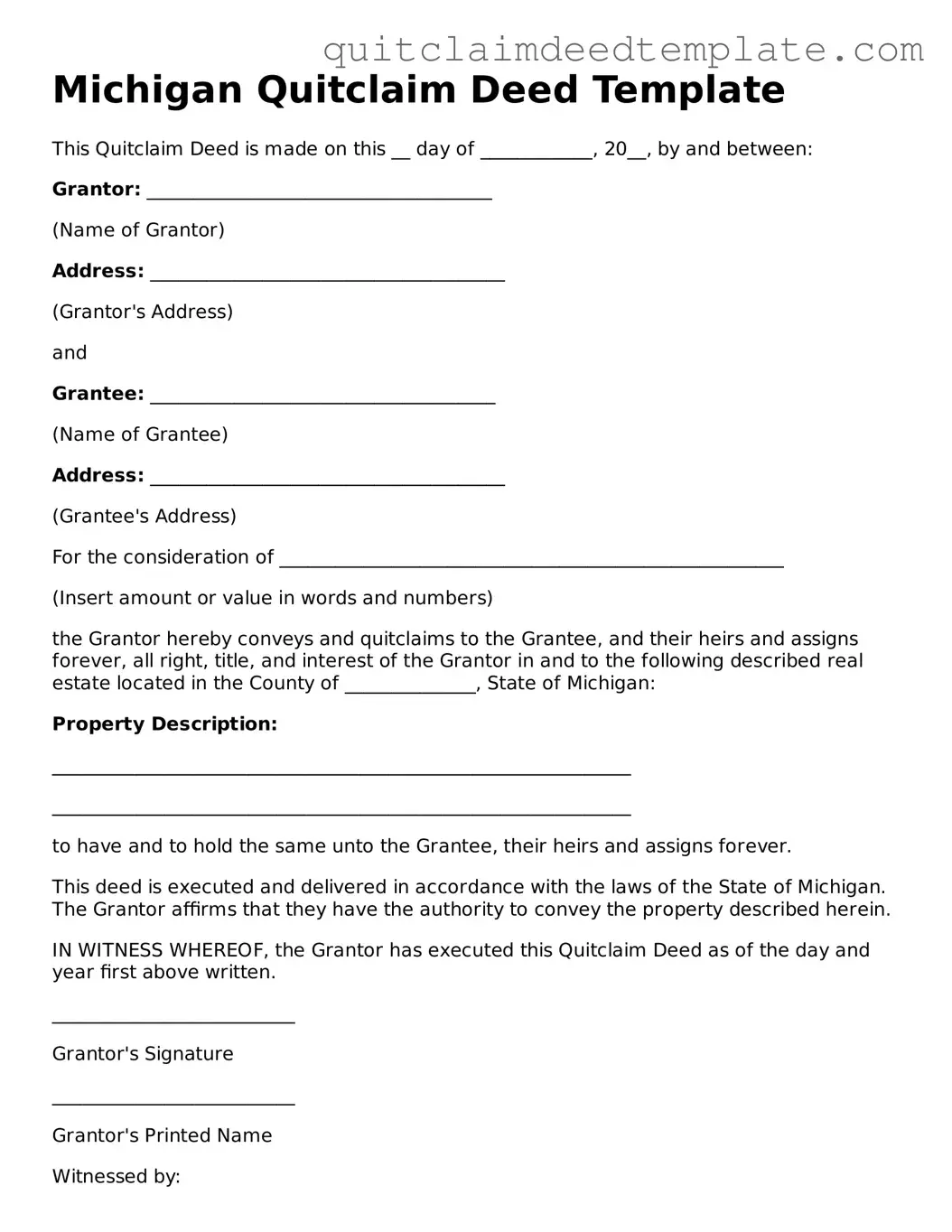Documents used along the form
When dealing with property transfers in Michigan, a Quitclaim Deed is often accompanied by various other forms and documents. These additional documents help ensure that the transfer is legally sound and properly recorded. Here are some common forms that are typically used alongside the Michigan Quitclaim Deed:
- Property Transfer Affidavit: This document provides information about the property being transferred, including its value and the reason for the transfer. It helps the local assessor determine property taxes.
- Affidavit of Value: This form is sometimes required to declare the value of the property being transferred, which can affect tax assessments and future sales.
- Title Insurance Policy: While not always mandatory, title insurance protects the buyer from potential disputes over property ownership. It ensures that the title is clear of any liens or claims.
- Recording Fee Payment: This is a payment made to the county register of deeds for recording the Quitclaim Deed and any associated documents. Fees vary by county.
- Power of Attorney: If the grantor (the person transferring the property) cannot be present to sign the Quitclaim Deed, a Power of Attorney allows someone else to act on their behalf.
- Notice of Transfer: This document informs relevant parties, including local authorities, about the change in property ownership, ensuring that all records are up-to-date.
- Tax Clearance Certificate: This certificate verifies that all property taxes have been paid before the transfer takes place, preventing future disputes over unpaid taxes.
- Homeowners Association (HOA) Approval: If the property is part of an HOA, obtaining approval for the transfer may be necessary to comply with the association's rules and regulations.
Understanding these documents is crucial for anyone involved in a property transfer. Each form serves a specific purpose and can help prevent complications down the line. Make sure to consult with a legal expert or real estate professional to ensure all necessary documents are prepared and submitted correctly.
